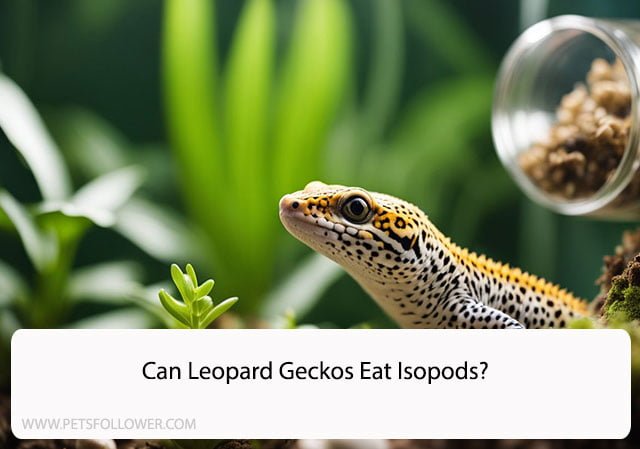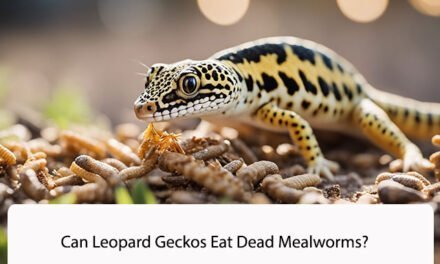Leopard geckos are a popular pet reptile for their unique appearance and docile nature. As with any pet, it’s important to provide them with a balanced and nutritious diet. One question that often comes up is whether leopard geckos can eat isopods, also known as pill bugs or rolly pollies.
Isopods are a common prey item for many reptiles and amphibians in the wild, and they can provide a good source of nutrition for leopard geckos as well. However, it’s important to consider a few factors before adding isopods to your gecko’s diet. In this article, we’ll explore the benefits and potential risks of feeding isopods to leopard geckos, as well as how to properly prepare and serve them.
Leopard Gecko Diet Basics
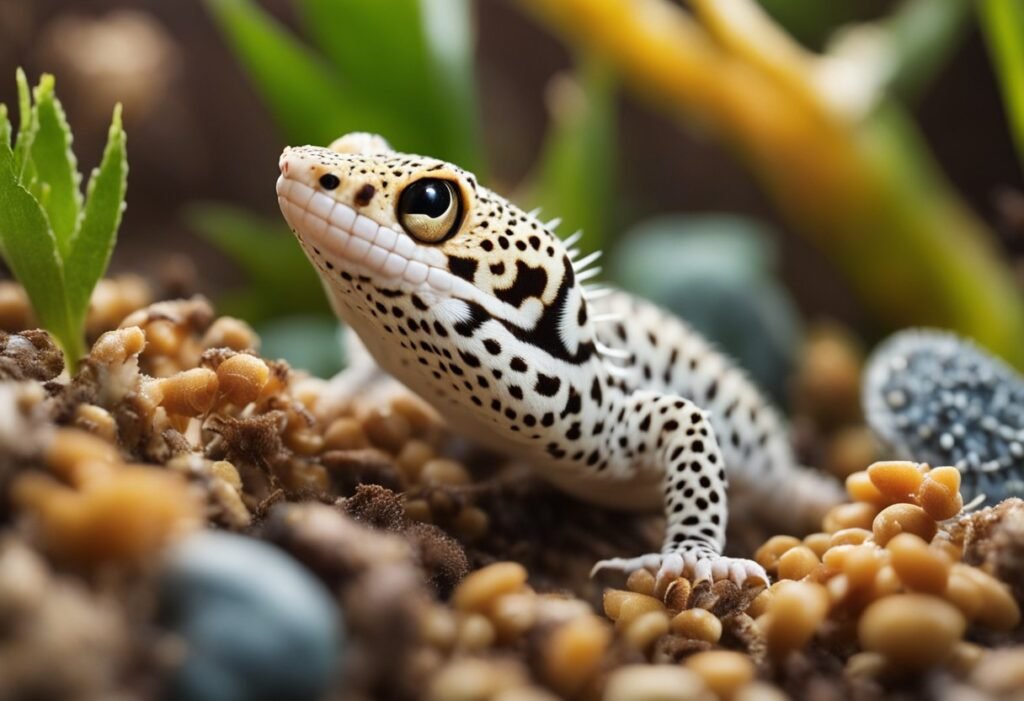
As pet owners, we want to ensure that our leopard geckos are getting the best nutrition possible. A balanced diet is essential for their overall health and well-being. In the wild, leopard geckos primarily feed on insects, but in captivity, they can also eat a variety of other foods.
When it comes to feeding leopard geckos, it’s important to remember that they are insectivores. This means that their diet should consist mainly of insects. Some suitable insects include crickets, mealworms, waxworms, and roaches. It’s important to vary their diet to ensure that they are getting a range of nutrients.
In addition to insects, leopard geckos can also eat other small creatures such as isopods. Isopods are a type of crustacean that are often used as a food source for other reptiles. They are high in protein and calcium, making them a nutritious addition to a leopard gecko’s diet.
It’s important to note that while isopods are safe for leopard geckos to eat, they should not be the primary source of their diet. A varied diet that includes a range of insects is essential for their health. Additionally, it’s important to ensure that any insects or other creatures fed to leopard geckos are gut-loaded, meaning that they are fed a nutritious diet themselves before being fed to the gecko. This helps to ensure that the gecko is getting the most nutrition possible from their food.
Overall, a balanced and varied diet is key to keeping our leopard geckos healthy and happy. By providing them with a range of nutritious foods, including isopods, we can ensure that they are getting all the nutrients they need to thrive.
Isopods as a Food Source
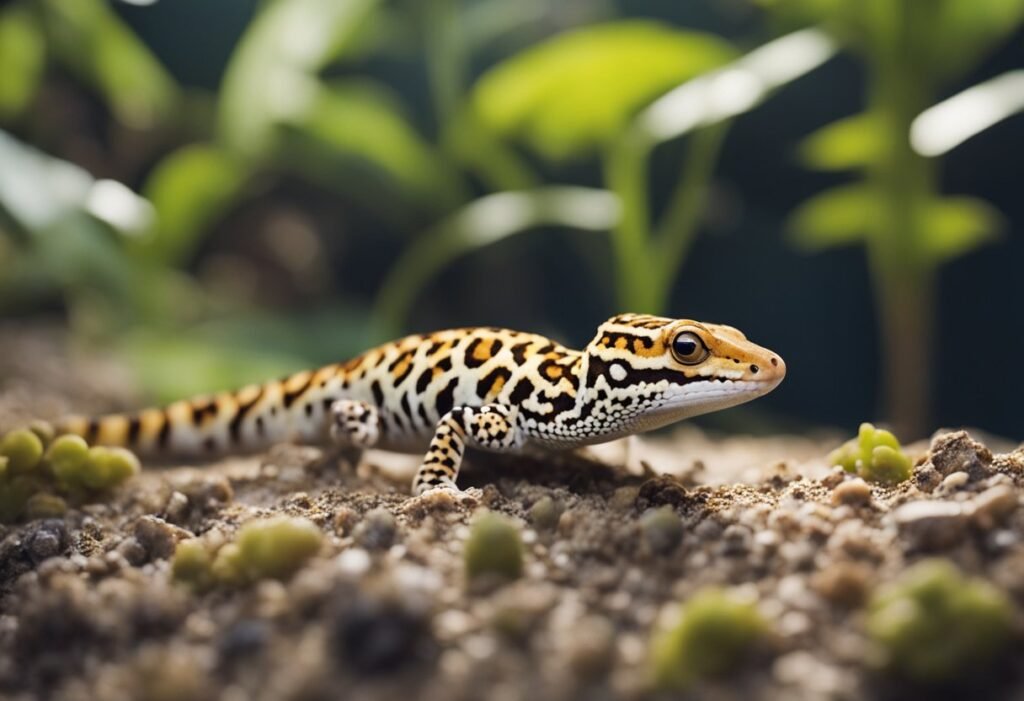
Leopard geckos are known to consume a variety of insects as part of their diet. One such insect that is often considered as a food source for leopard geckos is the isopod. Isopods are a type of crustacean that are commonly found in the wild and are also available as a feeder insect in pet stores.
Nutritional Value
Isopods are a good source of protein, calcium, and other essential vitamins and minerals that are important for the growth and development of leopard geckos. They are also low in fat, making them a healthy food choice for your pet.
In addition to their nutritional value, isopods have a hard exoskeleton that can help promote healthy digestion in leopard geckos. The rough texture of the exoskeleton can help to break down food in the gecko’s stomach, which can aid in the absorption of nutrients.
Risks and Considerations
While isopods can be a nutritious food source for leopard geckos, there are some risks and considerations to keep in mind. Isopods can be carriers of parasites, which can be harmful to your pet. It is important to ensure that the isopods you feed your gecko are free of parasites and other harmful bacteria.
Another consideration when feeding isopods to leopard geckos is the size of the insect. Isopods can vary in size, and it is important to choose an appropriate size based on the size of your gecko. Feeding your gecko insects that are too large can lead to choking or other digestive issues.
In conclusion, isopods can be a valuable addition to your leopard gecko’s diet. They are a good source of nutrition and can help promote healthy digestion. However, it is important to take into account the potential risks and considerations when feeding isopods to your pet.
Feeding Isopods to Leopard Geckos
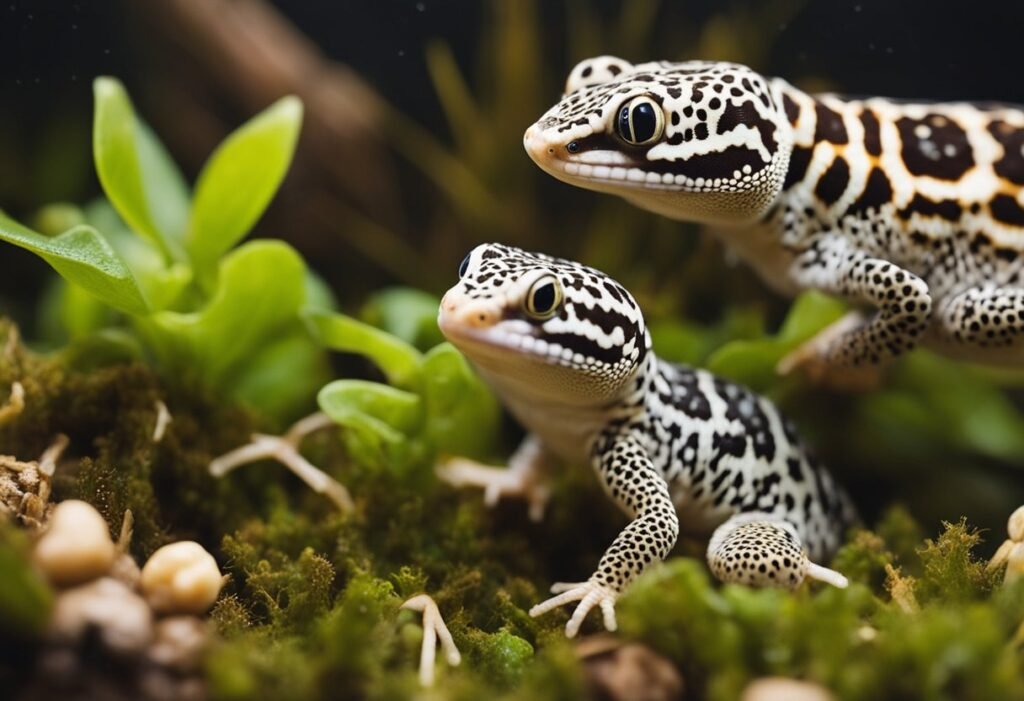
How to Feed
Isopods, also known as woodlice or pill bugs, can be a nutritious addition to a leopard gecko’s diet. However, it is important to properly prepare and feed them to ensure your gecko’s health.
To prepare isopods for feeding, we recommend keeping them in a separate container with a substrate of moist coconut fiber or sphagnum moss. This will help keep them hydrated and provide a nutritious base for them to eat. You can also offer them fresh fruits and vegetables, such as carrots or apples, to supplement their diet.
When it comes to feeding your leopard gecko, we suggest offering the isopods in a separate dish or container. This will help prevent accidental ingestion of substrate and make it easier to monitor how much your gecko is eating. You can also use feeding tongs to offer the isopods directly to your gecko.
Frequency and Quantity
While isopods can be a healthy addition to your leopard gecko’s diet, it is important to offer them in moderation. We recommend feeding isopods as a treat no more than once or twice a week.
The quantity of isopods to feed your gecko will depend on their size and appetite. As a general rule, we suggest offering 2-3 isopods per feeding for juvenile geckos and up to 5-6 for adult geckos. It is important to monitor your gecko’s weight and adjust the quantity accordingly to prevent overfeeding.
In conclusion, feeding isopods to leopard geckos can be a nutritious and enjoyable addition to their diet when done properly. By following these guidelines for preparation, feeding, and quantity, you can ensure your gecko stays healthy and happy.
Preparing Isopods for Feeding

When feeding leopard geckos, it is important to ensure that their food is properly prepared to provide them with the necessary nutrients. Isopods, also known as pill bugs or sow bugs, are a great source of protein and other essential nutrients for leopard geckos. Here are some tips on how to prepare isopods for feeding:
Culturing Isopods
The first step in preparing isopods for feeding is to culture them. This involves creating a suitable environment for the isopods to thrive in. Isopods can be easily cultured in a plastic container filled with a substrate such as coconut fiber or peat moss. The container should also have a lid with small holes for ventilation.
Isopods require a moist environment, so the substrate should be kept damp but not too wet. You can also add a piece of vegetable such as carrot or potato as a food source for the isopods. It is important to regularly check on the isopods and remove any dead ones to prevent mold and bacteria growth.
Gut Loading and Dusting
Once the isopods are cultured, they need to be gut loaded and dusted before feeding them to leopard geckos. Gut loading involves feeding the isopods with nutritious food such as fruits and vegetables to increase their nutritional value. This ensures that the leopard geckos receive all the necessary nutrients when they eat the isopods.
Dusting involves coating the isopods with a calcium and vitamin supplement powder before feeding them to the leopard geckos. This helps to prevent calcium deficiencies in the leopard geckos, which can lead to health problems such as metabolic bone disease.
In conclusion, preparing isopods for feeding requires culturing them in a suitable environment, gut loading them with nutritious food, and dusting them with a calcium and vitamin supplement powder. By following these steps, you can ensure that your leopard geckos receive a healthy and balanced diet.
Alternatives to Isopods
Common Insect Feeders
While isopods are a great source of nutrition for leopard geckos, there are other insects that can be fed to them to supplement their diet. Here are some common insect feeders that can be used:
- Crickets: Crickets are a staple feeder for leopard geckos and are readily available at most pet stores. They are high in protein and can be gut-loaded to provide additional nutrition.
- Mealworms: Mealworms are another common feeder that are high in protein and easy to find. They can also be gut-loaded to provide additional nutrition.
- Dubia Roaches: Dubia roaches are a great alternative to crickets and mealworms. They are high in protein and have a soft exoskeleton, making them easy for leopard geckos to digest.
Supplementing Diet
In addition to insects, there are other ways to supplement a leopard gecko’s diet. Here are some options:
- Commercial Diets: There are many commercial diets available that are specifically formulated for leopard geckos. These diets can be used as a supplement to their regular diet.
- Vegetables: While leopard geckos are primarily carnivorous, they can benefit from the addition of vegetables to their diet. Some good options include carrots, squash, and leafy greens.
- Calcium Supplements: Calcium is an important nutrient for leopard geckos, and adding a calcium supplement to their diet can help ensure they are getting enough. Calcium can be added to insects or dusted on their food.
Overall, while isopods are a great source of nutrition for leopard geckos, there are many other options available for supplementing their diet. It’s important to provide a varied diet to ensure they are getting all the nutrients they need.
Frequently Asked Questions

What are safe feeder insects for leopard geckos?
Leopard geckos are insectivores, and their diet should consist of a variety of safe and nutritious feeder insects. Some of the commonly recommended options include crickets, mealworms, dubia roaches, and waxworms. It is important to avoid feeding wild-caught insects, as they may contain harmful pesticides or parasites. Additionally, it is crucial to provide gut-loaded insects, meaning that they have been fed a nutritious diet before being fed to the leopard gecko.
Are isopods a nutritious option for leopard gecko diets?
Isopods, also known as sow bugs or pill bugs, are not a primary food source for leopard geckos. While they are not toxic, they do not provide significant nutritional value for leopard geckos. Therefore, it is not recommended to feed isopods to leopard geckos on a regular basis.
Can leopard geckos safely consume dairy cow and powder orange isopods?
Dairy cow and powder orange isopods are not recommended as a food source for leopard geckos. While they are not toxic, they do not provide significant nutritional value for leopard geckos. Additionally, some species of isopods may have hard exoskeletons that can be difficult for leopard geckos to digest.
What role do isopods play in a leopard gecko’s terrarium ecosystem?
Isopods can play a beneficial role in a leopard gecko’s terrarium ecosystem. They help to break down organic matter and improve soil quality. Additionally, they can serve as a food source for other animals in the terrarium, such as reptiles or amphibians that feed on small invertebrates.
How often can leopard geckos be fed isopods?
As previously mentioned, isopods are not a primary food source for leopard geckos and should not be fed on a regular basis. If isopods are provided as an occasional treat, they should be gut-loaded and dusted with calcium powder before being fed to the leopard gecko.
Are pillbugs and house bugs suitable for leopard geckos to eat?
Pillbugs and house bugs, also known as house centipedes, are not recommended as a food source for leopard geckos. While they are not toxic, they do not provide significant nutritional value for leopard geckos. Additionally, some species of house bugs may have hard exoskeletons that can be difficult for leopard geckos to digest.

